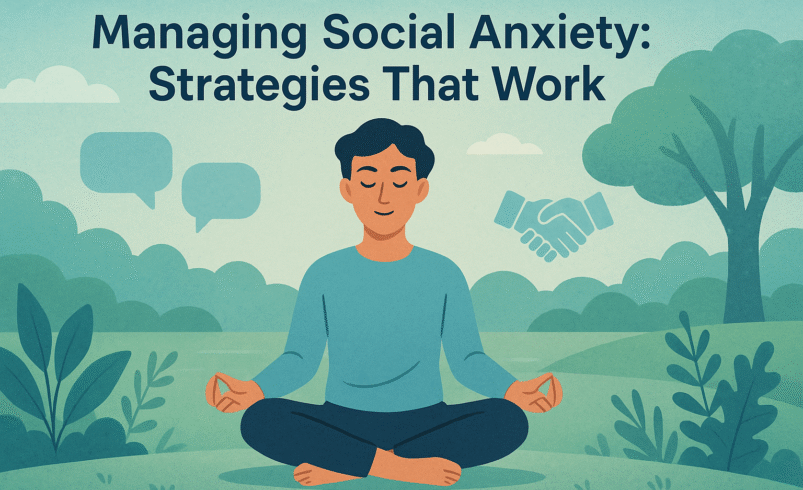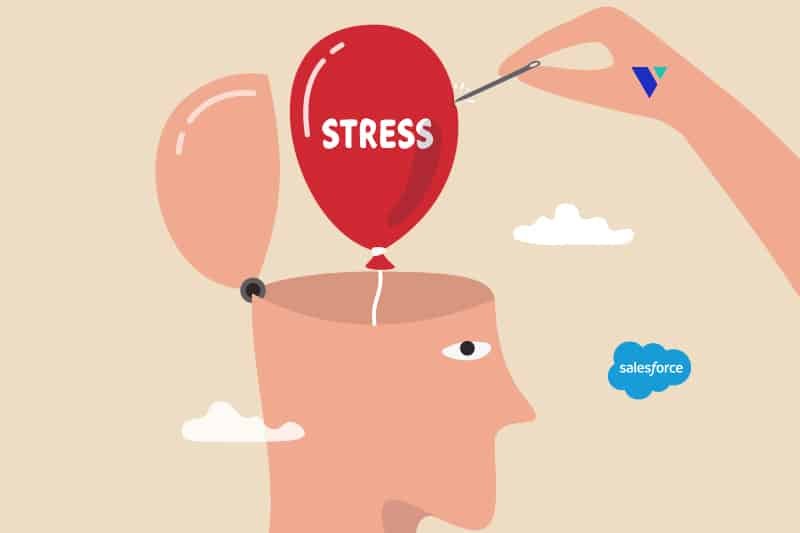Managing Social Anxiety: Strategies That Work

Imagine a world where the simplest social interactions – a casual chat with a colleague, ordering coffee, or attending a friend’s birthday party – feel like navigating a minefield. For millions, this isn’t imagination; it’s the daily reality of living with social anxiety. More than just shyness, social anxiety disorder (SAD) is an intense, persistent fear of being watched, judged, and scrutinized by others. This fear can be so overwhelming that it leads to avoidance of social situations, significantly impacting one’s quality of life, relationships, and professional opportunities.
The statistics are sobering: the National Institute of Mental Health reports that social anxiety disorder affects approximately 15 million American adults. It often begins in adolescence, a critical period for social development, and can persist for years, even decades, if left unaddressed. The good news is that social anxiety is highly treatable. With the right strategies and, for many, effective anxiety disorder treatment, individuals can learn to manage their symptoms and reclaim their social lives. This article will explore practical, evidence-based strategies to help you navigate the challenges of social anxiety and move towards a more confident, connected life.
Understanding the Roots of Social Anxiety
To effectively manage social anxiety, it helps to understand its underlying mechanisms. It’s not a character flaw but a complex interplay of genetic predisposition, brain chemistry, and learned behaviors. People with social anxiety often have an overactive amygdala, the part of the brain responsible for processing fear. They may also have developed negative thought patterns, such as “I’ll say something stupid,” or “Everyone will notice how nervous I am,” which become self-fulfilling prophecies, reinforcing their anxiety.
These negative thought patterns, known as cognitive distortions, play a significant role. For instance, “catastrophizing” (imagining the worst possible outcome) or “mind-reading” (assuming others are thinking negatively about you) are common. Recognizing these patterns is the first step towards challenging them.
Cognitive Behavioral Therapy (CBT): A Cornerstone Strategy
One of the most effective forms of anxiety disorder treatment for social anxiety is Cognitive Behavioral Therapy (CBT). CBT helps individuals identify and challenge the negative thought patterns and behaviors that fuel their anxiety. It’s a structured, goal-oriented approach that equips you with practical tools.
Key Components of CBT for Social Anxiety:
- Cognitive Restructuring: This involves learning to identify distorted thoughts and replace them with more realistic, balanced ones. For example, instead of thinking, “Everyone will laugh at me if I speak,” you might reframe it to, “Some people might disagree, but many will be interested in what I have to say.”
- Exposure Therapy: This is a gradual process of facing feared social situations in a controlled and systematic way. Starting with less anxiety-provoking scenarios and slowly moving to more challenging ones helps desensitize the fear response. For instance, if public speaking is a fear, you might start by practicing in front of a mirror, then a trusted friend, then a small group, and eventually a larger audience. The goal is to learn that your feared outcomes often don’t materialize, or if they do, they are manageable.
- Social Skills Training: For some, social anxiety may be accompanied by a lack of confidence in social skills. CBT can include exercises to improve communication, active listening, and assertive behavior, making social interactions feel less daunting.
Practical Strategies for Daily Management
Beyond formal therapy, several self-help strategies can significantly aid in managing social anxiety symptoms in everyday life.
1. Mindfulness and Relaxation Techniques
When anxiety strikes, our bodies go into fight-or-flight mode. Learning to calm this physiological response is crucial.
- Deep Breathing: Practicing diaphragmatic breathing can activate the parasympathetic nervous system, promoting relaxation. Inhale slowly through your nose for four counts, hold for seven, and exhale completely through your mouth for eight. Repeat several times.
- Mindfulness Meditation: Focusing on the present moment, without judgment, can help detach from anxious thoughts. Apps and guided meditations can be excellent resources for developing this skill.
- Progressive Muscle Relaxation: Tensing and then relaxing different muscle groups helps release physical tension often associated with anxiety.
2. Gradual Exposure (Your Own Pace)
While formal exposure therapy is part of CBT, you can also practice gradual exposure in your daily life.
- Start Small: If making eye contact is difficult, aim to hold it for an extra second with a cashier. If speaking up in meetings is daunting, prepare one comment or question beforehand.
- Set Achievable Goals: Don’t try to conquer your biggest fear all at once. Break down challenging situations into smaller, manageable steps.
- Celebrate Small Victories: Acknowledge and reward yourself for every step you take outside your comfort zone.
3. Challenge Negative Thoughts
Become an observer of your thoughts. When an anxious thought arises, pause and ask yourself:
- Is this thought based on fact or feeling?
- What’s the evidence for this thought? What’s the evidence against it?
- Is there an alternative way to look at this situation?
- What would I tell a friend in this situation?
Keeping a thought diary can be a powerful tool for this process, helping you identify patterns and practice cognitive restructuring.
4. Lifestyle Adjustments
Our physical health profoundly impacts our mental well-being.
- Regular Exercise: Physical activity is a natural stress reducer and can significantly alleviate anxiety symptoms.
- Balanced Diet: Avoid excessive caffeine and sugar, which can exacerbate anxiety. Focus on whole, unprocessed foods.
- Adequate Sleep: Lack of sleep can intensify anxiety and make it harder to cope with stress. Aim for 7-9 hours of quality sleep per night.
- Limit Alcohol and Drugs: While they might offer temporary relief, substances can worsen anxiety in the long run and interfere with effective anxiety disorder treatment.
When to Seek Professional Support
While self-help strategies are valuable, sometimes social anxiety requires professional intervention. If your anxiety is significantly impairing your daily life, relationships, or work, or if you feel overwhelmed and unable to cope, it’s time to seek support from a mental health professional. A therapist can provide a diagnosis, develop a personalized anxiety disorder treatment plan, and offer guidance through evidence-based therapies. In some cases, medication may be prescribed in conjunction with therapy to help manage symptoms.
Conclusion
Living with social anxiety can feel isolating and overwhelming, but it doesn’t have to be a life sentence. By understanding its mechanisms, embracing strategies like CBT, practicing mindfulness, challenging negative thoughts, and making positive lifestyle changes, you can gradually reduce its grip. Remember, recovery is a journey, not a destination. There will be good days and challenging days, but with persistence, self-compassion, and the right support, you can learn to navigate social situations with greater confidence and ease. Taking the first step towards managing your social anxiety is a powerful act of self-care and an investment in a more connected and fulfilling life.
Author Bio:
The author is a dedicated mental health advocate and writer with a passion for demystifying complex psychological concepts. With a background in psychology and extensive experience in mental wellness education, they specialize in crafting informative and empathetic content that empowers individuals to take charge of their mental health journeys. Their work focuses on evidence-based strategies, practical self-help techniques, and the importance of seeking professional support when needed, aiming to foster greater understanding and reduce the stigma surrounding mental health challenges.




